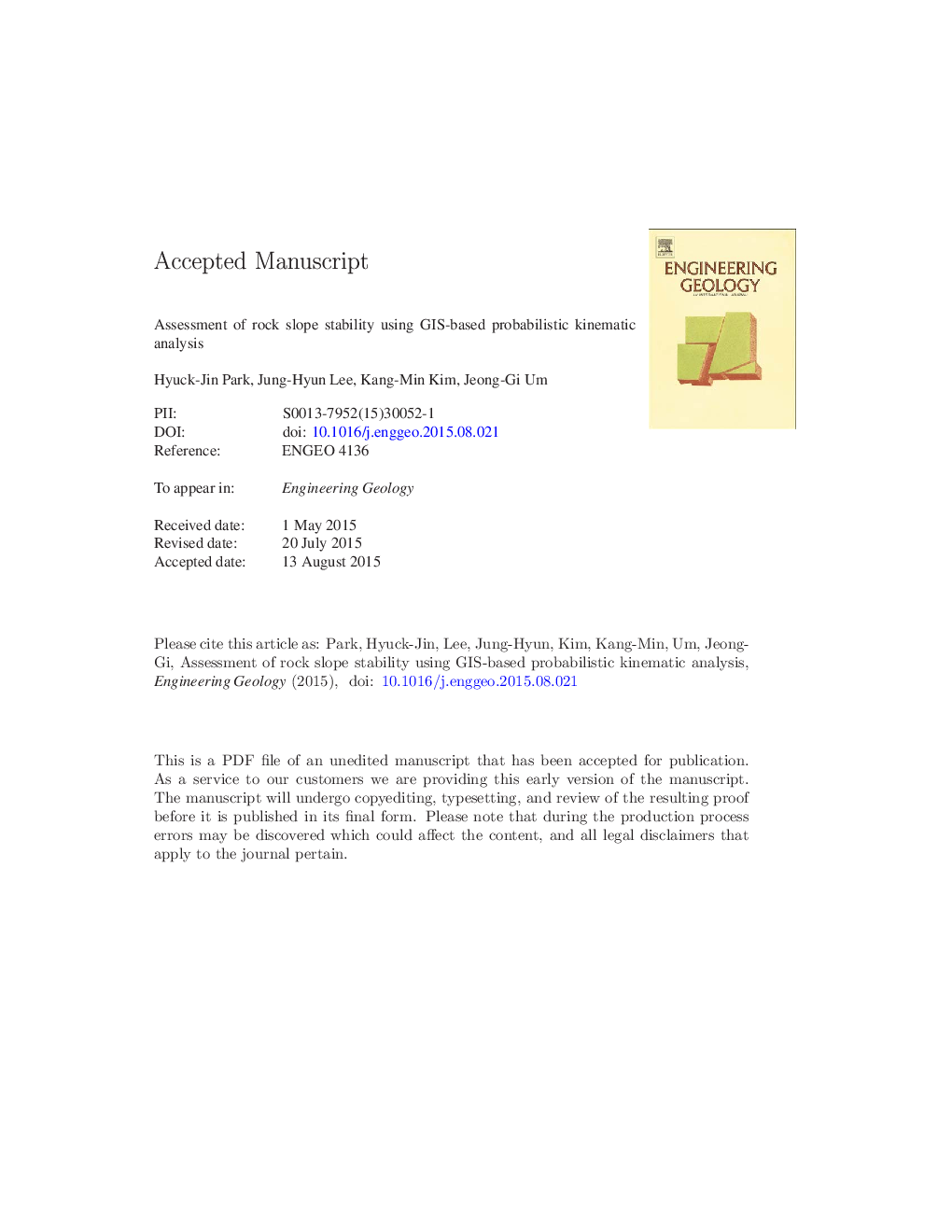| کد مقاله | کد نشریه | سال انتشار | مقاله انگلیسی | نسخه تمام متن |
|---|---|---|---|---|
| 6447632 | 1641782 | 2016 | 49 صفحه PDF | دانلود رایگان |
عنوان انگلیسی مقاله ISI
Assessment of rock slope stability using GIS-based probabilistic kinematic analysis
دانلود مقاله + سفارش ترجمه
دانلود مقاله ISI انگلیسی
رایگان برای ایرانیان
کلمات کلیدی
موضوعات مرتبط
مهندسی و علوم پایه
علوم زمین و سیارات
مهندسی ژئوتکنیک و زمین شناسی مهندسی
پیش نمایش صفحه اول مقاله

چکیده انگلیسی
Instability in a rock slope is highly dependent on unfavorable orientations of the discontinuities in the rock mass. Therefore, kinematic analysis has been used to analyze the structural condition of unfavorably oriented discontinuities using the stereographic projection method. In this analysis, the orientation of a discontinuity is compared with the slope orientation and friction angle by plotting the orientation of a discontinuity onto a stereonet. This stereonet-based kinematic analysis assumes that a uniform slope orientation and a tightly clustered orientation of the discontinuities exist. However, the slope orientation, represented by the slope aspect and slope angle, cannot be uniform if the slope faces are rugged, as in many natural rock slopes, or if the slope was created by deficient blasting. Moreover, the orientation of discontinuities measured in the field is often scattered, even in a same discontinuity set. However, such variations cannot be included in traditional kinematic analysis and representative values of the slope orientation and mean orientation of a discontinuity are used, which creates uncertainties. To overcome these problems, a GIS-based methodology using grid-based data on the slope orientation data and a probabilistic approach is proposed. To take into account variations in the slope orientation, a digital elevation model (DEM) of the slope face was used and the topographic data of the slope face was derived from the DEM. The slope faces were divided into 2Â ÃÂ 2Â m2Â pixels, and the orientation of the slope face was evaluated based on the grid cells. In addition, the orientation of a discontinuity was treated as a random variable, thereby accounting for natural variability, and a probabilistic analysis approach was adopted to deal with uncertainties and variability. Therefore, a grid-based probabilistic analysis module for the kinematic analysis was developed and used on a cell-by-cell basis to predict instability in spatially distributed slope faces. This probabilistic kinematic analysis was performed in a GIS environment because GIS provides an excellent platform for management and manipulation of raster-based spatial data. We applied this approach to the spatially distributed steep rock slopes in the Baehuryeong area, Korea, located along a tortuous mountain road.
ناشر
Database: Elsevier - ScienceDirect (ساینس دایرکت)
Journal: Engineering Geology - Volume 203, 25 March 2016, Pages 56-69
Journal: Engineering Geology - Volume 203, 25 March 2016, Pages 56-69
نویسندگان
Hyuck-Jin Park, Jung-Hyun Lee, Kang-Min Kim, Jeong-Gi Um,